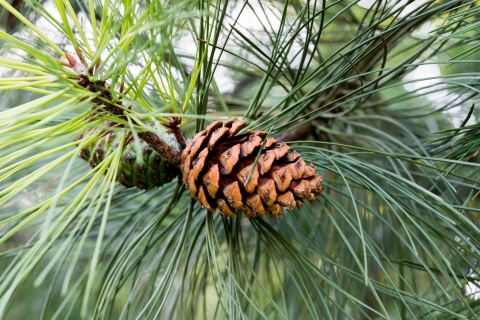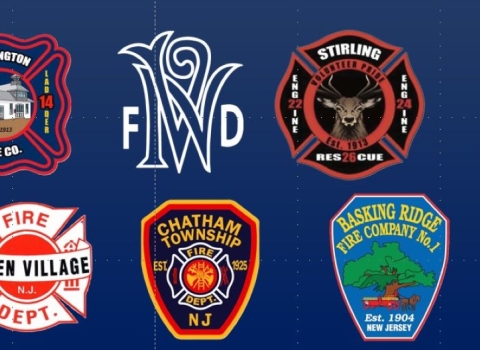Ponderosa pine (Pinus ponderosa) is one of the most widespread trees in the western United States. This distinctive pine can be found from the Black Hills of the Dakotas to the Cascades and from British Columbia to Southern California. It is also one of the most important tree species at the Inland Northwest National Wildlife Refuge Complex, which consists of Turnbull, Little Pend Oreille, and Kootenai National Wildlife Refuges.
Ponderosa Pine defining characteristic is its thick orange bark, which often flakes off like pieces of a jigsaw puzzle. The bark has been described of smelling like vanilla or butterscotch, depending on an individual’s sense of smell (a tree that has been in warm, direct sunlight often has the most noticeable aroma). The next time you encounter one, try to scratch and sniff and decide for yourself. A Ponderosa pine's bark is also really thick. A large tree might have bark that is six inches or more thick. The bark does not burn easily, which allows Ponderosas to survive during small wildfires. The tree's bark likewise creates flakes that fall off or are picked off by birds looking for food. Those flakes accumulate on the ground giving the appearance of the tree growing from the center of a big donut. A large tree could have a donut that is several inches to a foot high of old bark pieces that have piled up. Those same loose flakes provide cover for a number of insect species which in turn provide food for many birds. Many birds like woodpeckers, nuthatches, chickadees and more can be seen poking and probing the crevices in the bark in their constant search for insects to eat. Black-backed and Three-toed Woodpeckers will remove bark flakes to get to the bugs underneath and in doing so accelerate the creation of the donuts discussed above.
Ponderosa pines trees have long needles that grows in bundles of three. Those bundles grow near the end of the branches. The needles are five to ten inches long and give the tree a unique appearance. It also produces the largest cones in the Inland Northwest. Cones are 3-6 inches long and 2-4 inches wide. They produce large seeds that are a favorite food of red squirrels.
Ponderosas often grow in open stands with grasses growing underneath them. Stands like this are important for many wildlife species from elk to robins. Bears may graze underneath them while birds like nuthatches feed in the crowns above. The open stands they grow in were kept open by frequent small fires. When fires don’t occur other tree species that do well in shade or grow faster tend to fill in and choke them out. Ponderosas are the main evergreen at Turnbull and important part of the forests at Little Pend Oreille and Kootenai. All three refuges use prescribed fires to manage and maintain Ponderosa stands. These fires kill brush and small trees reducing competition for the established trees. This reduction in small trees and brush also helps keep fires small, meaning that when fires do occur the older trees are more likely to survive. Prescribed fire also favors the growth of grass and wildflowers under the pines. These in turn are a favorite of many wildlife species resulting in many types of wild animals being dependent on these small fires among the trees. The next time you visit your local Inland Northwest Wildlife Refuge, be on the lookout for the orange trees that smell like vanilla. You may see not just trees but diverse types of wildlife and wildflowers as well.





